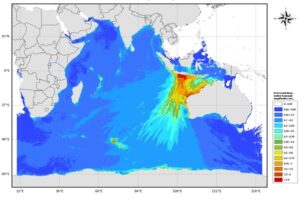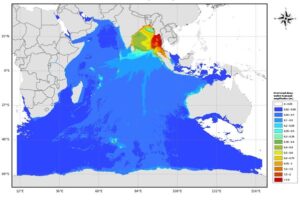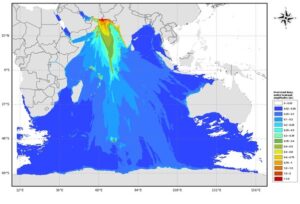At its 12th session held in Kish Island, Iran in March 2019, the Intergovernmental Coordination Group for the Indian Ocean Tsunami Warning and Mitigation System (ICG/IOTWMS) decided to organise an Indian Ocean Wave Exercise (IOWave20).
During the exercise planning, the Covid-19 pandemic occurred and did not show any signs of slowing before the exercise. In response, the ICG/IOTWMS published guidelines for tsunami response during the Covid-19 pandemic and the IOWave20 Task Team encouraged Member States to update their standard operating procedures for a pandemic situation.
The purpose of IOWave20 was for Member States to test communications protocols and conduct virtual tabletop exercises, as a minimum, to assess organizational standard operating procedures, plans and policies for tsunami warning and emergency response in the backdrop of a pandemic. Furthermore, by exercising during pandemic conditions, Member States had the opportunity to validate existing business continuity plans and arrangements.
Exercise Scenario
The exercise was comprised of three scenarios: Java trench, Andaman trench, and Makran trench, placing the entire Indian Ocean basin under threat. The scenarios were conducted one week apart during 6-20 October 2020. The Java trench tsunami reached the nearest coasts of Indonesia within minutes and took approximately 11 hours to travel from its source to the southern coast of South Africa. The Andaman trench tsunami reached the coast of Andaman Island in minutes and took approximately 17 hours to travel from its source to the coast of United Arab Emirates. The Makran trench tsunami reached the coasts of Iran and Pakistan within minutes and took approximately 15 hours to travel from its source to the coast of Bangladesh.
Image Map



Manual
Member States had to decide on the type exercises to conduct and number of scenarios to participate in. Participation in multiple exercise scenarios, at least at the NTWC and NDMO level, had the advantage of allowing standard operating procedure issues identified during the first exercise to be corrected and exercised again. It also encouraged the testing of different elements of the standard operating procedures because the tsunami arrival times were varied for each scenario.
Noting the interest of some Member States in engaging communities that were not impacted by the pandemic in Exercise IOWave20, the Task Team recommended that this should be at the sole discretion of the Member State considering their unique situation with respect to Covid-19. Member States individually assessed any health risks in the backdrop of the pandemic and only then decided on the appropriate level of participation in IOWave20, ensuring that there was no interference with physical distancing measures already in place.
At least twenty counties participated in IOWave20, with six reporting community involvement (i.e. Indonesia, Kenya, Mauritius, Mozambique, Seychelles, Thailand).
More information of the IOWave20 exercise could be found at website: www.ioc-tsunami.org/IOWave20.
Report
Following the exercise, participating countries are requested to complete the online Exercise Evaluation Survey. This feedback supports the evaluation of Exercise IOWave20 and for the development of subsequent exercises. The evaluation is integrated into the IOWave20 Report that was made available after the ICG/IOTWMS meeting in November 2022.
